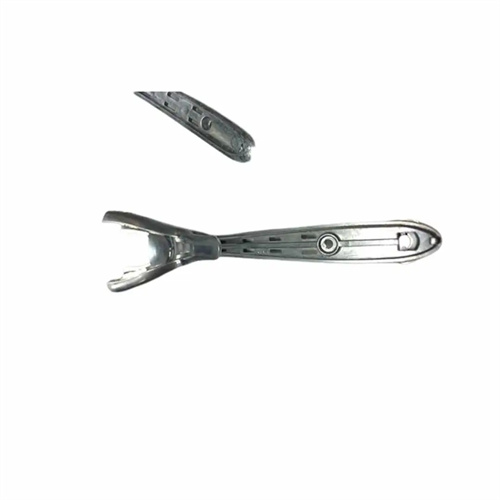Application range of die casting
Die casting has been widely used in many industrial fields due to its high efficiency, precision, and ability to form complex structures. Die castings can be seen in everything from daily necessities to high-end industrial equipment, and its scope of application is constantly expanding with technological advancements.

The automotive industry is the most widely used sector for die-casting, accounting for over 60% of the die-casting market. Die-cast parts can be found in nearly all automotive parts. In automotive powertrains, key components such as engine blocks, cylinder heads, and transmission housings are often die-cast using aluminum alloys. These parts are complex in structure and require high dimensional precision. Die-casting allows for integrated molding, reducing assembly steps. For example, a certain brand’s engine block utilizes large-scale, integrated die-casting to integrate over 30 parts, reducing weight by 15% and increasing production efficiency by 50%. Load-bearing components in the chassis system, such as steering knuckles and control arms, are die-cast using high-strength aluminum alloys, ensuring both strength and lightweight. Within the body system, components such as door frames, instrument panel brackets, and seat frames are die-cast. These complex structural designs meet the need for optimized interior space. The rise of new energy vehicles has further driven the application of die-casting technology. Large components such as battery housings and motor casings are now produced in one piece using ultra-large die-casting machines (over 6,000 tons). For example, the die-casting of the Tesla 4680 battery housing achieves a high degree of component integration, significantly reducing production costs.

The 3C (computer, communications, and consumer electronics) industry is another key application area for die-casting, placing extremely high demands on the precision and appearance of die-cast parts. In the mobile phone industry, structural components such as the middle frame and back cover are often die-cast from aluminum or magnesium alloys, requiring dimensional tolerances within ±0.03mm and a surface roughness of Ra ≤ 0.8μm to ensure precise fit with components such as the screen and battery. Laptop casings and keyboard supports are die-cast from magnesium alloy, leveraging the alloy’s lightweight properties (density 1.74g/cm³) to reduce overall weight while providing excellent heat dissipation. Base station casings and router housings in communications equipment are die-cast from aluminum alloy, capable of withstanding outdoor weather and weathering. The complex structures formed through die-casting meet the requirements for internal wiring layout. Die-casting achieves complex curved surfaces and fine graining in consumer electronics components such as camera casings and game console controllers, enhancing the product’s aesthetic quality.

The home appliance industry is widely adopting die-cast parts to replace traditional stampings and plastic parts, improving product durability and aesthetics. In kitchen appliances, rice cooker inner pots and pressure cooker lids are die-cast aluminum alloys with a non-stick surface treatment for even heat conduction and easy cleaning. Range hood impellers and motor brackets are die-cast to ensure stability at high speeds. In white goods, air conditioner compressor housings and motor end caps are die-cast from gray cast iron or aluminum alloys to withstand high pressure and vibration. Refrigerators’ hinges, support legs, and other structural components are die-cast from zinc alloys for excellent wear and corrosion resistance. Small appliances, such as hair dryer housings and blender bases, achieve complex design through die-casting while simultaneously meeting strength and lightweight requirements. With the development of smart homes, home appliances are placing even higher demands on the precision of die-cast parts. For example, the drive wheel brackets of robot vacuums must maintain a dimensional tolerance within ±0.05mm to ensure precise movement.

The medical device industry has strict requirements on the material properties and safety of die-cast parts, and die-casting is increasingly used in this field. Parts such as scalpel handles and hemostatic forceps brackets in surgical instruments are die-cast from stainless steel or titanium alloys. The surface is passivated to provide good corrosion resistance and biocompatibility, ensuring safety and hygiene during surgery. The monitor housings and ultrasound probe brackets in medical equipment are die-cast from aluminum alloys, which not only protect the internal precision electronic components but also facilitate disinfection and cleaning. The wheelchair frames and walker supports in rehabilitation equipment are die-cast from high-strength aluminum alloys, reducing weight while ensuring sufficient load-bearing capacity (usually ≥100kg). The high-precision characteristics of die-casting make the assembly of medical equipment more accurate. For example, the rotating bracket of a CT machine is die-cast to ensure concentricity during rotation (≤0.02mm), thereby improving imaging accuracy.

The aerospace and military industries place extremely high demands on the strength, lightweighting, and reliability of die-cast parts, and die-casting technology demonstrates unique advantages in this field. UAV fuselages and wing structures are die-cast from magnesium alloy, which is 30% lighter than aluminum alloy and significantly improves flight range. Helicopter control system components, such as rocker arms and tie rod joints, are die-cast from high-strength aluminum alloys and undergo rigorous flaw detection (such as X-ray and penetrant testing) to ensure the absence of internal defects. Gun parts and missile guidance system casings in military equipment are die-cast from high-temperature-resistant alloys, capable of withstanding shock and vibration in extreme environments. Precision structural components in satellites and spacecraft, such as antenna brackets and fuel tank connectors, are die-cast from titanium alloys, meeting strength requirements while minimizing weight and reducing launch costs. Advances in die-casting technology, such as vacuum die-casting and semi-solid die-casting, are further improving the strength and density of die-cast parts, promising even wider application in the aerospace sector.
